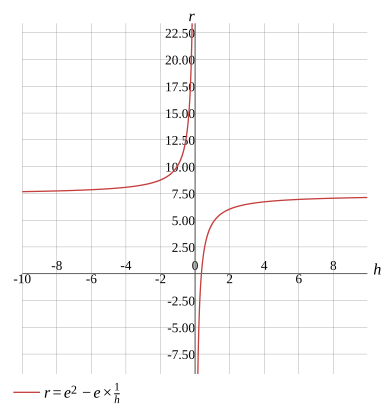Question
Function
Find the inverse
Evaluate the derivative
Find the domain
Load more

f−1(h)=e2−he
Evaluate
r=e2−e×h1
Simplify
More Steps


Evaluate
e2−e×h1
Multiply the terms
e2−he
Reduce fractions to a common denominator
he2h−he
Write all numerators above the common denominator
he2h−e
r=he2h−e
Interchange h and y
h=ye2y−e
Swap the sides of the equation
ye2y−e=h
Cross multiply
e2y−e=yh
Simplify the equation
e2y−e=hy
Move the variable to the left side
e2y−e−hy=0
Collect like terms by calculating the sum or difference of their coefficients
(e2−h)y−e=0
Move the constant to the right side
(e2−h)y=0+e
Removing 0 doesn't change the value,so remove it from the expression
(e2−h)y=e
Divide both sides
e2−h(e2−h)y=e2−he
Divide the numbers
y=e2−he
Solution
f−1(h)=e2−he
Show Solution

Solve the equation
Solve for h
Solve for r
h=e2−re
Evaluate
r=e2−e×h1
Simplify
More Steps


Evaluate
e2−e×h1
Multiply the terms
e2−he
Reduce fractions to a common denominator
he2h−he
Write all numerators above the common denominator
he2h−e
r=he2h−e
Swap the sides of the equation
he2h−e=r
Cross multiply
e2h−e=hr
Simplify the equation
e2h−e=rh
Move the variable to the left side
e2h−e−rh=0
Collect like terms by calculating the sum or difference of their coefficients
(e2−r)h−e=0
Move the constant to the right side
(e2−r)h=0+e
Removing 0 doesn't change the value,so remove it from the expression
(e2−r)h=e
Divide both sides
e2−r(e2−r)h=e2−re
Solution
h=e2−re
Show Solution

Graph
